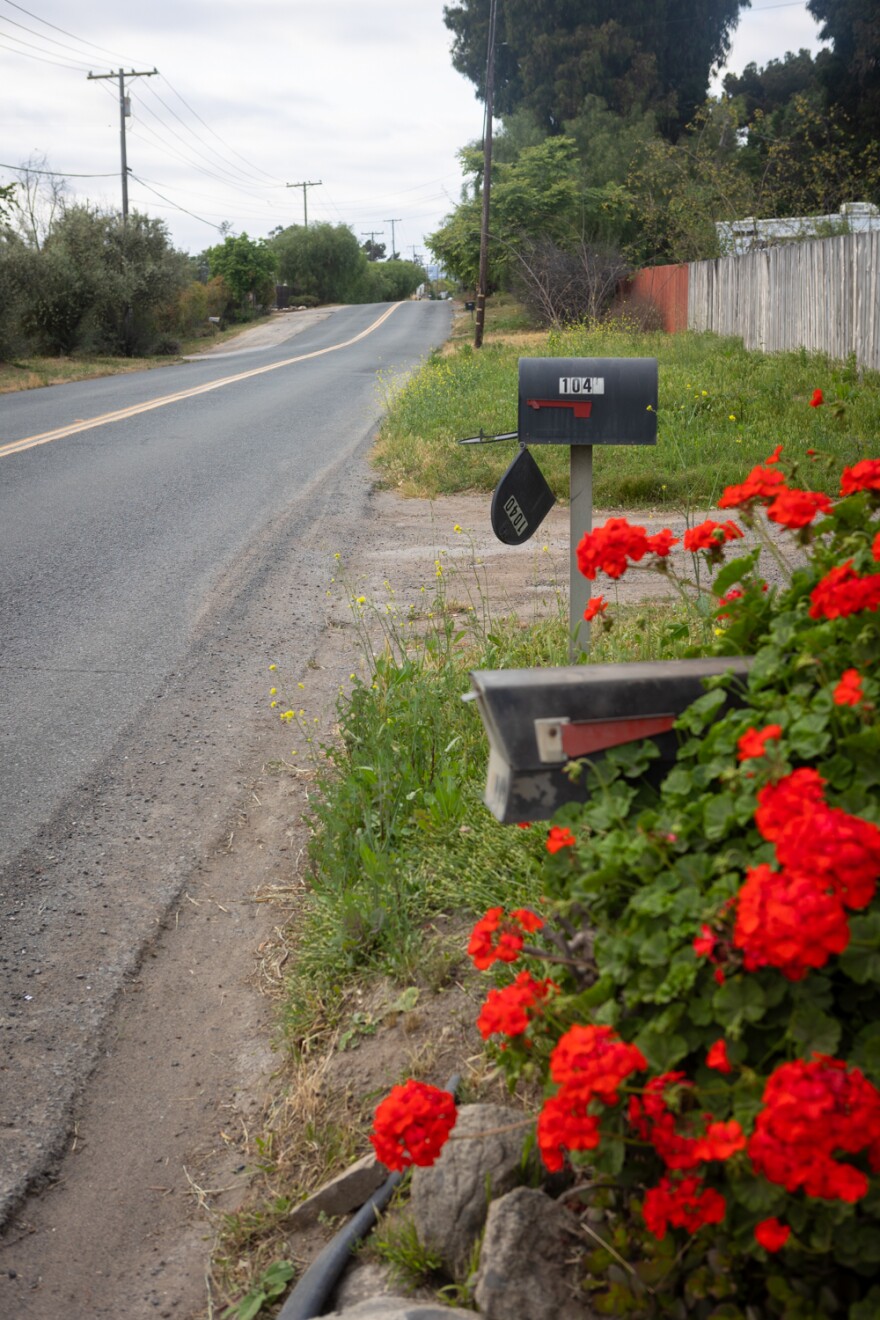Members of a rural valley community near Escondido are pushing back against a proposed battery storage facility which could be built feet from their homes.
If completed, what’s known as the Seguro energy storage project would be one of the largest in the country, with dozens of battery containers sitting on more than 22 acres of a former horse ranch in unincorporated North County. The AES Corp., a global energy company behind the proposal, said the 400-megawatt facility would help California meet its skyrocketing energy needs and address San Diego County’s goals for net zero carbon emissions.
But in an area still shaken from wildfires in years past, four local residents told inewsource that the risk of a blaze would be too high to tolerate. They’ve pointed to recent incidents in Monterey County and at an AES-operated site in Chandler, Arizona, where destructive battery fires taxed emergency responders.
This plan for North County is somewhat unique: While Monterey County’s Moss Landing Energy Storage Facility was built on an existing power plant site and another known as Crimson Energy Storage Project was built in the California desert near the border with Arizona, the Seguro project would be in close proximity to homes.
“I thought it was absurd when I heard about this proposal to place it smack in the middle of a residential area. It made absolutely no sense,” said Andy Laderman, a homeowner who shares a property line with the proposed site.
He added, “It's located in a very high fire-risk area.”
Maxwell Guarniere, development manager at AES, said the company chose the proposed site because it is close to both existing grid infrastructure and electricity demand. That way, he said, AES wouldn’t have to rely as much on long overhead transmission lines.
The company said the site would have the capacity to store enough power for nearly 300,000 homes for four hours. It also said the project would bring new tax revenue and local jobs during construction and operations, though further details were not included on its website.
Guarniere said battery plants help meet San Diego’s energy needs by storing power for when the area needs it most. The Seguro development, he said, would add needed flexibility to help meet California’s decarbonization goals.
AES had initially intended to ask for a minor-use permit to begin the project. Two other battery projects in unincorporated San Diego have been built with a minor-use permit based on their limited size and infrastructure needs, county spokesperson Donna Durckel said.
But county officials have since countered with a bigger request for the Seguro project. Given the scale of the project, its proximity to Palomar Medical Center and the need for a utility line off-site, the county wrote in a May 12 letter, AES would have to apply for a major-use permit. That kind of permit is for projects “which have substantial impacts” — like airports, schools, hospitals and correctional institutions — and they require more oversight, Durckel explained. This means AES will have to prove to fire district officials that the project “doesn’t pose a significant risk to the community,” she said.
Guarniere said the company intends to apply for the new classification.
“This affirms AES’ sustainable development practices and our commitment to be a good neighbor when designing and proposing projects,” he told inewsource in a statement.

The county’s May letter also included a range of additional questions for the company about the project, including its potential impact on wildlife habitat, which it will have to answer for approval. The San Diego County Planning Commission normally approves major use permits.
A visit to the proposed location last week showed a fenced-in field surrounded by horse stalls and small homes. Attempts to reach a representative of the former horse ranch on the property were unsuccessful.
Plans for the Seguro project indicate barbed-wire-topped walls and shielded lights would secure the lot, which is zoned primarily for agricultural crop production. The site would house battery racks that would be kept within safe temperatures through a heating, ventilating, and air conditioning system. As many as 12 staff members would stay at the site at once.
An analysis of the environmental risks of the project has yet to be released.
The California Energy Commission explains on its website how battery storage companies like AES earn a profit. Operators can purchase energy from the grid at times of low demand — when electricity is cheap — and then sell it back to the grid when demand is high. The means for energy production are also reflected in the price: Clean electricity is generally cheaper than electricity created from natural gas.
That means batteries can technically help California energy become greener by making up for some of the demand for dirty electricity at times of high stress on the grid.
It’s still a “frightening” development, said nearby community leader JP Theberge, who leads the Elfin Forest Harmony Grove Town Council.
“We think it is a very dangerous facility in a very high fire-risk area,” he said. “It doesn’t appear to be a safe use of the land.”
Laderman said if a fire were to happen on the battery storage site, his horse would be at great risk of injury — as would those of other residents.
“I mean, our horse will be within 50 feet of the closest proposed battery,” he said. “If you say, OK, shelter in place with your doors closed and air conditioner off, well, I can't really do that with the horse.”
The concerns over such projects have prompted action elsewhere. In New York, two state legislators introduced a law banning the construction of battery storage sites within Staten Island.
“Placing a large, sophisticated machine, filled with potentially explosive lithium-ion batteries, in residential or school communities is unacceptable,” said Assemblyman Sam Pirozzolo in a February statement. “The fires caused by these batteries typically cannot be extinguished because of the presence of harsh chemical toxins, increasing the hazard and potential damage.
“At the end of the day, the terms ‘classroom’ and ‘blast-radius’ should never, ever be in the same sentence.”
Guarniere said that engaging with local community members is “core” to AES practices. The company “will continue to work closely with all stakeholders including nearby residents, San Diego County, and the local fire agencies to ensure the project includes community input and is designed to meet the latest applicable codes, safety standards and environmental requirements,” he said.
The company aims to begin operating in late 2025.
-
The U.S. government still faces economic peril as the debt ceiling debate remains unresolved.
-
Developing a better understanding of your own finances may be hard, but it's not impossible.










